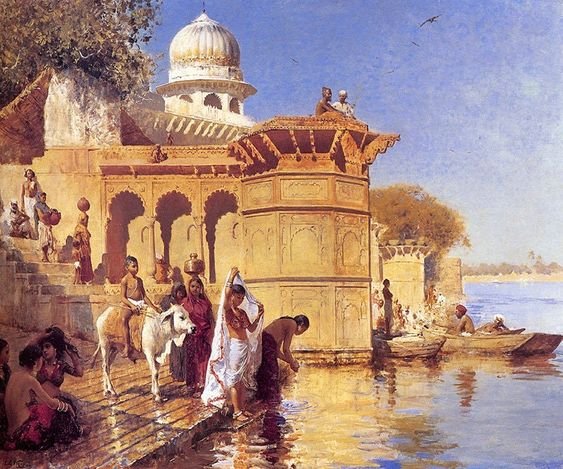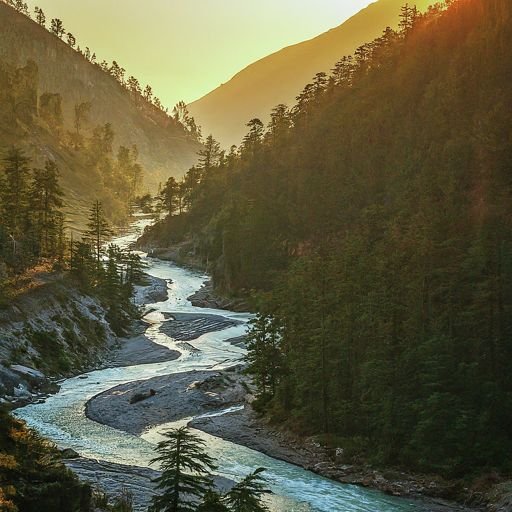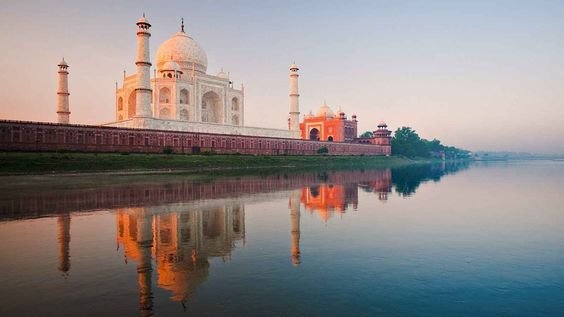Yamuna River: The Dying Tributary of the Ganges

The Yamuna River is one of the spiritually and ecologically important rivers of north India. As a major river, the Ganges plays an important role in the agriculture, ecology and culture of the region. Originating in the Himalayas, the river flows through cities like Delhi, Agra and Mathura and is a lifeline for millions of people.

But now this once primitive river is struggling with severe pollution and has become a sad symbol of neglect and environmental degradation. Over the years, unchecked industrial pollution, urbanization and untreated pollution have made the Yamuna one of the most polluted rivers in the world Despite several restoration programmes, the river conditions remain dire, threatening ecosystems and dependent communities.
Origin of the Yamuna River
The Yamuna River originates from the Yamunotri Glacier, placed at an elevation of about 6,387 meters in the Garhwal Himalayas of Uttarakhand. Similar to the Ganges, the Yamuna starts off evolved its journey inside the Himalayas and flows southward for 1,376 kilometres before merging with the Ganga at Triveni Sangam in Prayagraj (previously called Allahabad).
The river traverses numerous states, along with Uttarakhand, Himachal Pradesh, Haryana, Delhi, and Uttar Pradesh, even as assisting agricultural fields, cities, and cities along its route. However, as it descends from the mountains and enters the plains, the river more and more suffers from pollution, especially in areas like Delhi and Agra.

Major tributaries of the Yamuna include the Tons, Chambal, Betwa, and Sindh rivers. These tributaries offer additional water and play a crucial function in assisting the ecology of the Yamuna basin. Historically, the river has been an important water supply for civilisations and stays an essential part of India’s riverine machine.
Mythology and Historical Background
River Yamuna has an important place in Hindu mythology and is considered a goddess. According to legend, the river is named after Yamuna, daughter of Surya (sun god) and Sanjana (cloud goddess). She is also the twin sister of Yama (the god of death). A bath in the Yamuna is believed to purify one from sin and free one from the cycle of rebirth. The river is closely associated with Lord Krishna, who spent his childhood on its banks in Vrindavan. This connection makes Yamuna an important part of religious events and festivals.

Historically, the Yamuna has been important for the development of various civilizations along its banks, from the Indus Valley Civilization to the Mughal Empire. The river has supported the community for thousands of years. During the Mughal era, many impressive buildings, including the Taj Mahal in Agra, were built along the river, adding to its cultural significance. Yamuna also played an important role in India’s Green Revolution by irrigating the fertile plains of northern India.
Environmental Challenges and Pollution
Despite its mythological and historical importance, the Yamuna faces severe pollution, causing it to sink as a river. The environmental challenges facing the river today are significant and, if not addressed, threaten human lives and aquatic ecosystems.
Key Sources of Pollution
- Untreated Sewage: The stretch of the Yamuna River that flows through Delhi accounts for 80% of the river’s general pollution. Millions of litres of untreated sewage from households and industries go with the flow at once into the river each day. Due to the metropolis’s population boom and inadequate waste treatment infrastructure, this example has worsened over time.
- Industrial Effluents: Factories, especially those involved in dyeing, chemical compounds, and tanning, discharge unsafe effluents into the river. These pollutions comprise heavy metals, which include mercury and lead, that are poisonous to aquatic existence and human beings.
- Agricultural Runoff: The excessive use of insecticides and fertilisers in farming contributes to water pollution. Runoff from close by agricultural fields includes dangerous chemical substances into the river, similarly contaminating the water.
- Religious and Cultural Practices: During fairs, people regularly unload services of plant life, food, and different gadgets into the river. While those rituals are deeply rooted in culture, they negatively affect the river’s health. Additionally, the immersion of idols crafted from non-biodegradable substances worsens the pollution trouble.
- Water Extraction and Flow Reduction: A good-sized quantity of the Yamuna’s water is diverted for irrigation and consuming. This diversion reduces the river’s herbal drift, making it greater difficult for pollution to disperse and leaving sections of the river almost stagnant.

Ecological Consequences
The declining health of the river negatively impacts the aquatic ecosystem it once supported. Fish populations have plummeted, and the once abundant Yamuna River dolphin is now on the brink of extinction. Toxic pollution has caused eutrophication in the river, causing excessive algae growth that reduces oxygen levels, preventing other creatures from surviving
Furthermore, the contaminated water poses a serious health risk to millions of people who depend on the river for drinking, bathing and other daily needs because as a result cholera and diarrhoea are common in communities as they live near the river bank.
Restoration Initiatives and Current Status
Both the government and environmental organisations have identified the Yamuna’s vital nation and have undertaken several recuperation efforts. However, progress has been gradual, leaving the river in a precarious circumstance.

Yamuna Action Plan (YAP)
Launched in 1993, the Yamuna Action Plan is one of India’s most important river restoration programmes. It aims to reduce pollution by constructing sewage treatment plants (STPs) and sensitize the public on the importance of keeping the river clean but despite these efforts, the river still faces challenges due to due to weak law enforcement and poor infrastructure.
Namami Gange and Yamuna’s Inclusion
The Namami Gange initiative, released in 2014, makes a speciality of the Yamuna River, a first-rate tributary of the Ganga. This initiative pursuits to clean the river’s floor, set up new sewage remedy flowers (STPs), and display business discharges. However, enforcing these measures efficaciously throughout one-of-a-kind states provides a big mission.
Delhi Government’s Role
The Delhi government has implemented measures to reduce pollution in the Yamuna by expanding sewage treatment plants and imposing stricter regulations on industries that dump garbage into the river. In addition, there are plans to revitalize important sections of the river, including artificial wetlands for natural decontamination.

Community and NGO Efforts
Local communities and non-governmental organizations (NGOs) play an important role in raising awareness through various campaigns. The public has been encouraged to adopt environmentally friendly practices through programs such as the “Yamuna Cleanup Drive” and school and education programmes. In addition, religious leaders and activists advocate sustainable rituals to reduce sacrifices in the river.
Conclusion
The Yamuna River, once an essential source of life and inspiration, is now on the verge of fall apart due to pollution and forget. Its mythological and ancient importance highlights the pressing need to restore the river for ecological reasons and to hold a critical part of India’s cultural background. The pollution of the Yamuna serves as a stark reminder of the continued warfare among improvement and environmental responsibility.

While projects just like the Yamuna Action Plan and Namami Gange provide hope, their fulfilment relies on the collective efforts of governments, industries, and residents. It is essential to strictly enforce environmental regulations, expand sewage remedy infrastructure, and sell sustainable practices. Without immediately and sustained movement, the river that when supported civilisations and spiritual traditions dangers becoming a forgotten waterway, incapable of sustaining lifestyles.
Reviving the Yamuna is ready greater than simply environmental recuperation; it is about reclaiming our connection with nature and ensuring that future generations inherit a river which could inspire, nourish, and preserve life over again. The adventure toward a purifier Yamuna would require dedication and collaboration, however it’s far an undertaking worth pursuing for the sake of each ecology and humanity.


